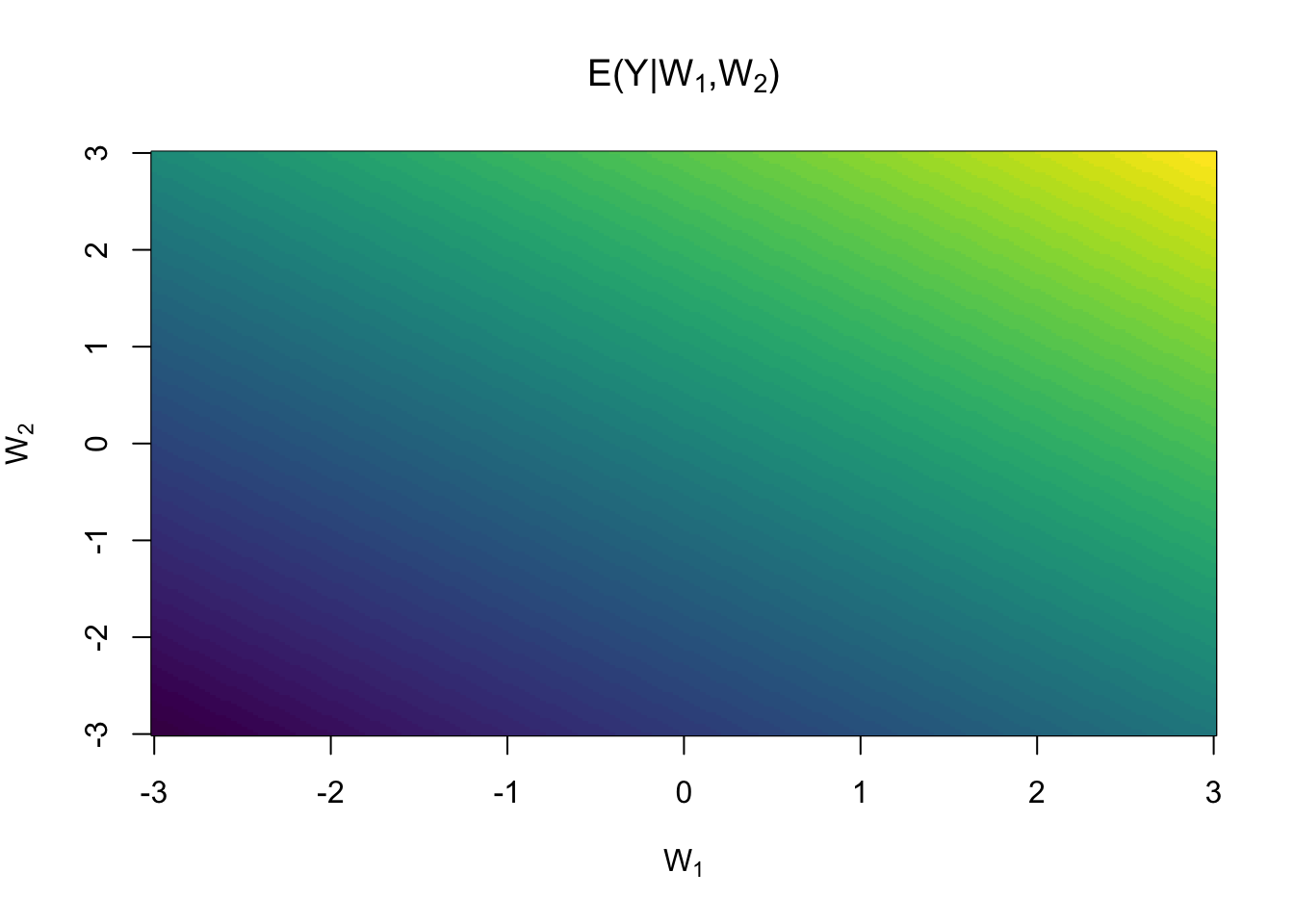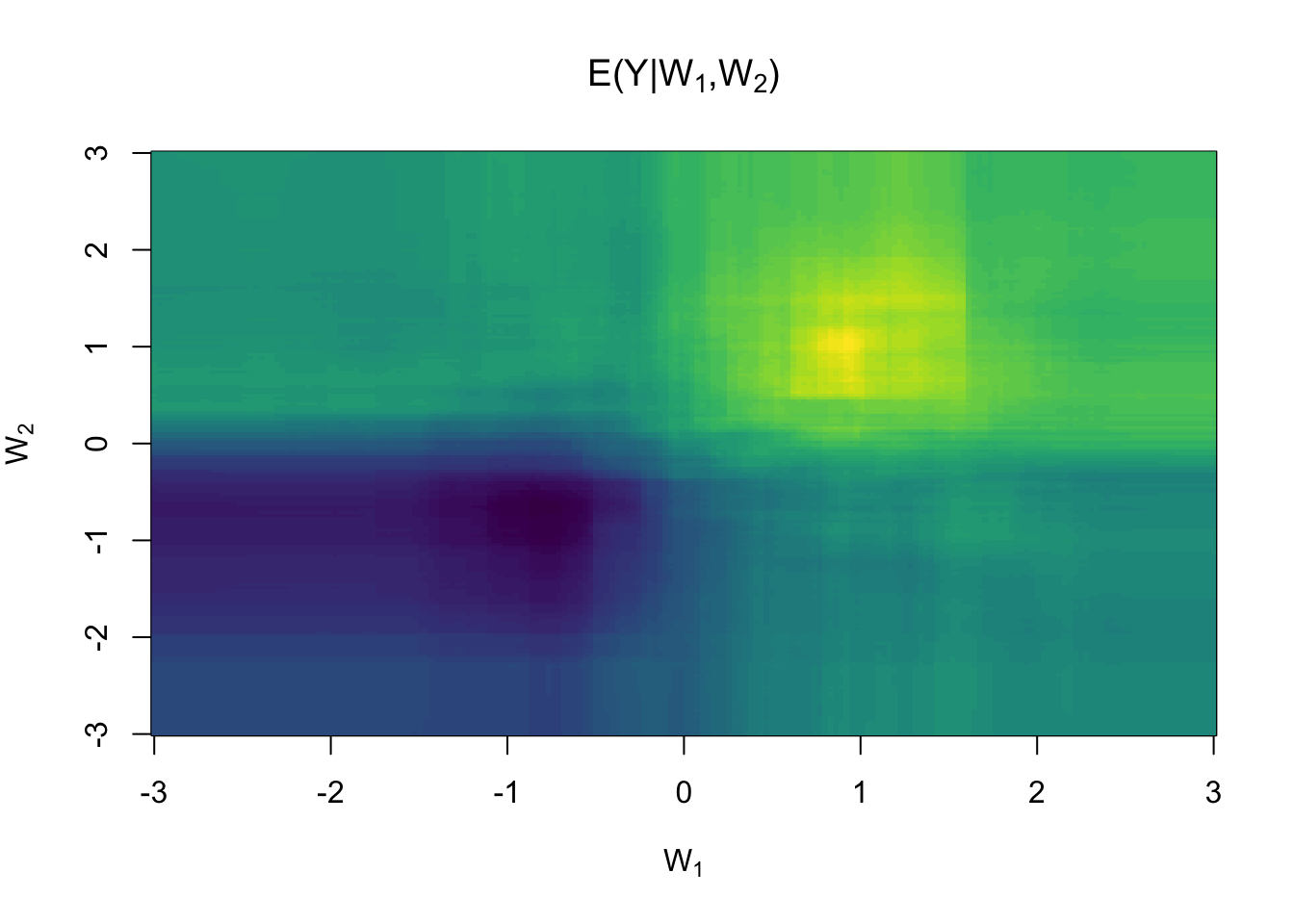
targeted)

Various methods for targeted learning and semiparametric inference including augmented inverse probability weighted (AIPW) estimators for missing data and causal inference (Bang and Robins (2005) doi:10.1111/j.1541-0420.2005.00377.x), variable importance and conditional average treatment effects (CATE) (van der Laan (2006) doi:10.2202/1557-4679.1008), estimators for risk differences and relative risks (Richardson et al. (2017) doi:10.1080/01621459.2016.1192546), assumption lean inference for generalized linear model parameters (Vansteelandt et al. (2022) doi:10.1111/rssb.12504).
You can install the released version of targeted from CRAN with:
install.packages("targeted")And the development version from GitHub with:
remotes::install_github("kkholst/targeted", ref="dev")Computations such as cross-validation are parallelized via the
{future} package. To enable parallel computations and
progress-bars the following code can be executed
future::plan("multisession")
progressr::handlers(global=TRUE)To illustrate some of the functionality of the targeted
package we simulate some data from the following model \[Y = \exp\{-(W_1 - 1)^2 - (W_2 - 1)^2)\} -
2\exp\{-(W_1+1)^2 - (W_2+1)^2\}A + \epsilon\] with independent
measurement error \(\epsilon\sim\mathcal{N}(0,1)\), treatment
variable \(A \sim
Bernoulli(\text{expit}\{-1+W_1\})\) and independent covariates
\(W_1, W_2\sim\mathcal{N}(0,1/2)\).
library("targeted")
simdata <- function(n, ...) {
w1 <- rnorm(n) # covariates
w2 <- rnorm(n) # ...
a <- rbinom(n, 1, plogis(-1 + w1)) # treatment indicator
y <- exp(- (w1 - 1)**2 - (w2 - 1)**2) - # continuous response
2 * exp(- (w1 + 1)**2 - (w2 + 1)**2) * a + # additional effect in treated
rnorm(n, sd=0.5**.5)
data.frame(y, a, w1, w2)
}
set.seed(1)
d <- simdata(5e3)
head(d)
#> y a w1 w2
#> 1 -0.59239667 0 -0.6264538 -1.5163733
#> 2 0.01794935 0 0.1836433 0.6291412
#> 3 0.24968229 0 -0.8356286 -1.6781940
#> 4 1.34434300 1 1.5952808 1.1797811
#> 5 1.16367655 0 0.3295078 1.1176545
#> 6 -0.94757031 0 -0.8204684 -1.2377359wnew <- seq(-3,3, length.out=200)
dnew <- expand.grid(w1 = wnew, w2 = wnew, a = 1)
y <- with(dnew,
exp(- (w1 - 1)**2 - (w2 - 1)**2) -
2 * exp(- (w1 + 1)**2 - (w2 + 1)**2)*a
)
image(wnew, wnew, matrix(y, ncol=length(wnew)),
col=viridisLite::viridis(64),
main=expression(paste("E(Y|",W[1],",",W[2],")")),
xlab=expression(W[1]), ylab=expression(W[2]))
Methods for targeted and semiparametric inference rely on fitting
nuisance models to observed data when estimating the target parameter of
interest. The {targeted} package implements the R6 reference class learner
to harmonize common statistical and machine learning models for the
usage as nuisance models across the various implemented estimators, such
as the targeted:cate function. Commonly used models are
constructed as learner class objects through the
learner_* functions.
As an example, we can specify a linear regression model with an interaction term between treatment and the two covariates \(W_1\) and \(W_2\)
lr <- learner_glm(y ~ (w1 + w2)*a, family = gaussian)
lr
#> ────────── learner object ──────────
#> glm
#>
#> Estimate arguments: family=<function>
#> Predict arguments:
#> Formula: y ~ (w1 + w2) * a <environment: 0xaee788b30>To fit the model to the data we use the estimate
method
lr$estimate(d)
lr$fit
#>
#> Call: stats::glm(formula = formula, family = family, data = data)
#>
#> Coefficients:
#> (Intercept) w1 w2 a w1:a w2:a
#> 0.18808 0.13044 0.08253 -0.33517 0.15330 0.24068
#>
#> Degrees of Freedom: 4999 Total (i.e. Null); 4994 Residual
#> Null Deviance: 3098
#> Residual Deviance: 2741 AIC: 11200Predictions, \(E(Y\mid W_1, W_2)\),
can be performed with the predict method
head(d) |> lr$predict()
#> 1 2 3 4 5 6
#> -0.01878799 0.26395942 -0.05942914 0.68687155 0.32330487 -0.02109944pr <- matrix(lr$predict(dnew), ncol=length(wnew))
image(wnew, wnew, pr, col=viridisLite::viridis(64),
main=expression(paste("E(Y|",W[1],",",W[2],")")),
xlab=expression(W[1]), ylab=expression(W[2]))
Similarly, a Random Forest can be specified with
lr_rf <- learner_grf(y ~ w1 + w2 + a, num.trees = 500)Lists of models can also be constructed for different
hyper-parameters with the learner_expand_grid function.
To assess the model generalization error we can perform \(k\)-fold cross-validation with the
cv method
mod <- list(glm = lr, rf = lr_rf)
cv(mod, data = d, rep = 2, nfolds = 5) |> summary()
#> , , mse
#>
#> mean sd min max
#> glm 0.5498117 0.02987117 0.5085057 0.5969734
#> rf 0.5070569 0.03177828 0.4597520 0.5534290
#>
#> , , mae
#>
#> mean sd min max
#> glm 0.5907746 0.01516298 0.5686472 0.6148165
#> rf 0.5684956 0.01659710 0.5453521 0.5953637An ensemble learner (super-learner) can easily be constructed from
lists of learner objects
sl <- learner_sl(mod, nfolds = 10)
sl$estimate(d)
sl
#> ────────── learner object ──────────
#> superlearner
#> glm
#> rf
#>
#> Estimate arguments: learners=<list>, nfolds=10, meta.learner=<function>, model.score=<function>
#> Predict arguments:
#> Formula: y ~ (w1 + w2) * a <environment: 0x15cf956c8>
#> ─────────────────────────────────────
#> score weight
#> glm 0.5499084 0.03290729
#> rf 0.5070931 0.96709271pr <- matrix(sl$predict(dnew), ncol=length(wnew))
image(wnew, wnew, pr, col=viridisLite::viridis(64),
main=expression(paste("E(Y|",W[1],",",W[2],")")),
xlab=expression(W[1]), ylab=expression(W[2]))
In the following we are interested in estimating the target parameter \(\psi_a(P) = E_P[Y(a)]\), where \(Y(a)\) is the potential outcome we would have observed if treatment \(a\) had been administered, possibly contrary to the actual treatment that was observed, i.e., \(Y = Y(A)\). To assess the treatment effect we can then the consider the average treatment effect (ATE) \[E_P[Y(1)]-E_P[Y(0)],\] or some other contrast of interest \(g(\psi_1(P), \psi_0(P))\). Under the following assumptions
then the target parameter can be identified from the observed data distribution as \[E(E[Y|W,A=a]) = E(E[Y(a)|W]) = E[Y(a)]\] or \[E[Y I(A=a)/P(A=a|W)] = E[Y(a)].\]
This suggests estimators based on outcome regression (\(g\)-computation) or inverse probability
weighting. More generally, under the above assumption we can constructor
a one-step estimator from the Efficient Influence
Function combining these two \[
E\left[\frac{I(A=a)}{\Pi_a(W)}(Y-Q(W,A)) + Q(W,a)\right].\]
In practice, this requires plugin estimates of both the outcome model,
\(Q(W,A) := E(Y\mid A, W)\), and of the
treatment propensity model \(\Pi_a(W) :=
P(A=a\mid W)\). The corresponding estimator is consistent even if
just one of the two nuisance models is correctly specified.
First we specify the propensity model
prmod <- learner_glm(a ~ w1 + w2, family=binomial)We will reuse one of the outcome models from the previous section,
and use the cate function to estimate the treatment
effect
a <- cate(response.model = lr_rf, propensity.model = prmod, data = d, nfolds = 5)
a
#> Estimate Std.Err 2.5% 97.5% P-value
#> E[y(1)] -0.1700 0.02628 -0.2214840 -0.1185 9.939e-11
#> E[y(0)] 0.1483 0.07595 -0.0005763 0.2971 5.089e-02
#> ───────────
#> (Intercept) -0.3183 0.07996 -0.4749849 -0.1615 6.892e-05In the output we get estimates of both the mean potential outcomes
and the difference of those, the average treatment effect, given as the
term (Intercept).
summary(a)
#> cate(response.model = lr_rf, propensity.model = prmod, data = d,
#> nfolds = 5)
#>
#> Estimate Std.Err 2.5% 97.5% P-value
#> E[y(1)] -0.1700 0.02628 -0.2214840 -0.1185 9.939e-11
#> E[y(0)] 0.1483 0.07595 -0.0005763 0.2971 5.089e-02
#> ───────────
#> (Intercept) -0.3183 0.07996 -0.4749849 -0.1615 6.892e-05
#>
#> Average Treatment Effect:
#> Estimate Std.Err 2.5% 97.5% P-value
#> [E[y(1)]] - [E[y(0)]] -0.3183 0.08008 -0.4752 -0.1613 7.055e-05
#>
#> Null Hypothesis:
#> [E[y(1)]] - [E[y(0)]] = 0Here we use the nfolds=5 argument to use 5-fold
cross-fitting to guarantee that the estimates converges weakly
to a Gaussian distribution even though that the estimated influence
function based on plugin estimates from the Random Forest does not
necessarily lie in a \(P\)-Donsker
class.
We use the dev branch for development and the
main branch for stable releases. All releases follow semantic versioning, are tagged and notable
changes are reported in NEWS.md.
If you want to ask questions, require help or clarification, or report a bug, we recommend to either contact a maintainer directly or the following:
We will then take care of the issue as soon as possible.
targetedAll types of contributions are encouraged and valued. See the CONTRIBUTING.md for details about how to contribute code to this project.